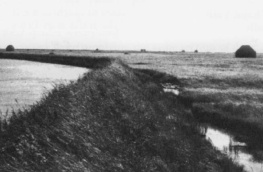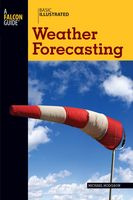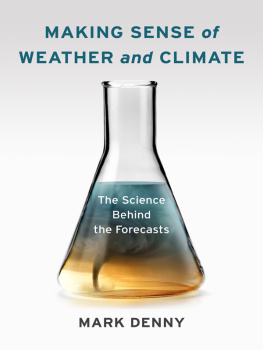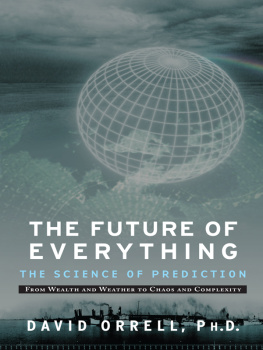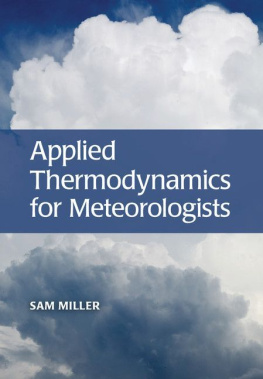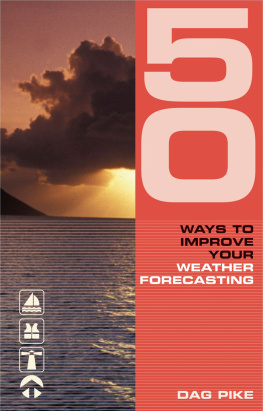Stephen Saxby, the tumultuous birth of weather forecasting, and Saxby's Gale of 1869
And makes men mad.
Cast of Characters
Cleveland Abbe: American meteorologist, that countrys first official weather forecaster.
Sir George Airy: Britains Astronomer Royal from 1835 to 1881, a supporter of FitzRoy.
Frederick Allison: Amateur meteorologist in Halifax, Nova Scotia.
R. H. Allnatt: Regular London Times weather correspondent, and critic of Saxbys lunar theory.
Franois Arago: French astronomer and physicist, a supporter of Espy in the storm controversy.
Alexander Dallas Bache: American scientist who, as superintendent of the U.S. Coast Survey, became involved in a turf war with Matthew Maury.
Christoph Buys Ballot: Dutch meteorologist and proponent of international cooperation in meteorology.
Clement Horton Belcher: Almanac publisher in Halifax, Nova Scotia.
Gaspard-Gustave de Coriolis: French scientist who discovered the Coriolis effect.
William Cunnabell: Almanac publisher in Halifax, Nova Scotia.
James Pollard Espy: Brilliant but argumentative American scientist, a.k.a. the Storm King, who discovered that latent heat is the main source of the energy of hurricanes and challenged the views of William Redfield.
William Ferrel: American mathematician who demonstrated that the Coriolis effect affects the motion of winds.
Robert FitzRoy: British Admiral who invented the term forecast, established storm warnings in Britain, and issued the worlds first weather forecast.
Benjamin Franklin: American polymath, and a founding father of the United States, who was the first to realize that storms move from place to place.
James Glaisher: English meteorologist employed at the Royal Observatory at Greenwich.
Robert Hare: American scientist who played a minor role in the great storm controversy.
Joseph Henry: Leading American physicist who, as first secretary of the Smithsonian Institution, became a leading light in the development of weather forecasting in the United States.
Sir John Herschel: English astronomer, son of Sir William Herschel, who took up Redfields ideas on storms in Britain.
Luke Howard: English amateur meteorologist who classified clouds, and who also believed that the moon influenced weather.
George Templeman Kingston: Pioneer of weather forecasting in Canada, where he initiated storm warnings.
Charles Knight: Publisher of the British Almanac .
George Cargill Leighton: Publisher of the Illustrated London Almanack .
Urbain Le Verrier: French mathematician and astronomer who foresaw the possibility of storm warnings.
Matthew Fontaine Maury: American oceanographer who brought meteorologists together to agree on an international system for recording weather observations.
Richard James Morrison: Notorious astrologer and almanac publisher in England, a.k.a. Zadkiel Tao-Sze.
Samuel Morse: Inventor of the electric telegraph, without which weather forecasting would never have been possible.
Patrick Murphy: English almanac publisher.
Denison Olmsted: American professor at Yale College who championed the work of William Redfield.
Henry Piddington: English sea captain who developed a rule of thumb that helped sailors avoid the worst winds in a typhoon or hurricane.
William C. Redfield: Amateur American scientist who discovered that the winds in hurricanes rotate around a storm centre. Espys main opponent in the great storm controversy.
William Reid: British army officer who studied Atlantic hurricanes and became a great ally of Redfield.
Stephen Martin Saxby: English naval instructor who believed that the moons motion influences weather. Predicted the hurricane of October 4, 1869, that hit the Bay of Fundy.
Zadkiel Tao-Sze: See Richard James Morrison.
Chronology
1743 Benjamin Franklin discovers that storms move from place to place.
1821 William C. Redfield observes that winds in a hurricane rotate around its centre.
1833 James Pollard Espy discovers that latent heat is the source of energy in a hurricane.
183459 Redfield and Espy go head-to-head in the American Storm Controversy.
1835 Gaspard-Gustave de Coriolis discovers that moving objects on the surface of the earth are deflected to the right in the northern hemisphere.
1843 Robert FitzRoy first proposes the idea of storm warnings in Britain.
1847 Samuel Morse patents his electric telegraph.
1850 Joseph Henry starts posting a daily weather map at Washingtons Smithsonian Institution.
1853 (September) Matthew Fontaine Maury organizes the Brussels Conference on Meteorology.
1853 (November 13) A devastating storm in the Crimea leads many to believe that the telegraph would make storm warnings possible.
1854 (August) Robert FitzRoy becomes head of the British Board of Trades Meteorological Department.
1856 William Ferrel shows that winds on earth are deflected because of the Coriolis effect.
1861 (February 6) FitzRoy issues his first storm warning for British mariners.
1861 (August 1) FitzRoysand the worldsfirst weather forecast is published in the London Times .
186165 The Civil War interrupts weather forecasting in the U.S.
1865 Following FitzRoys death, the British Board of Trade halts weather forecasts.
1868 (December) Stephen Saxby warns of a devastating storm for the following October.
1869 (September 1) Cleveland Abbe issues the first of his weather probabilities in the U.S.
1869 (October 45) Saxbys Storm.
Introduction
In any year, two, threesometimes fourAtlantic hurricanes reach the shores or offshore waters of Nova Scotia, New Brunswick, and Newfoundland. Usually they have lost much of their vigour by the time they reach these latitudes. But not always.
The hurricane that hit the Bay of Fundy on October 4, 1869, and became known in the Canadian Maritimes as the Saxby Galea bit of an understatement, given its malevolencewas not the most destructive storm in the history of the region. Other historic storms have taken more lives, sunk more ships, and destroyed more buildings. One of the deadliest Atlantic hurricanes, for instance, struck Newfoundland in 1775, killing as many as four thousand people in what was likely the worst natural disaster in Canadian history. Another killer storm, packing winds of a hundred knots (185 km/h), passed just south of Nova Scotia in August 1873, killing at least 223 (and maybe as many as six hundred) people and destroying twelve hundred boats and nine hundred buildings.
Saxbys Gale took a heavy toll, nevertheless. As hurricanes go, it was modest in size, but the enormous power locked up in the thunderheads of a hurricane of any size make it a brute to be reckoned with. It has been said that if all the power in a fully developed Atlantic hurricane could be harnessed, it would supply the worlds demand for electricity for a month. To imagine how vicious a storm Saxbys Gale was, Nova Scotians need only think back to Hurricane Juan of September 2003a storm of about the same intensitywhich is still fresh in the memories of many for the seven deaths and widespread destruction it caused.
The Saxby Gale was a most unusual storm for a number of reasons.
First, it was predicted almost a year ahead by the Royal Navy man for whom it was named. Stephen Martin Saxby was a controversial character whose ideas about weather went against the grain of mainstream meteorology of the time. In many ways he was a typical middle-class Victorian Englishman who liked to dabble in scientific matters, from archaeology to zoology. He was intelligent, well-educated, a humanitarian, and a family man, and he had the courage of his convictions, even when the scientific establishment scorned his ideas. He is often referred to as Lieutenant or Captain Saxby, but he was not in fact a naval officer at all, nor did he ever refer to himself as such. His naval ranks were invented by the newspapers. Saxby was a naval instructor, a civilian who was hired by the navy under rather unusual circumstances.

